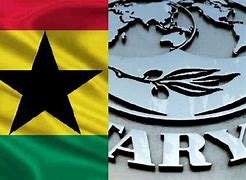The implementation of the African Continental Free Trade Area (AfCFTA) is expected to reduce trade costs by 4.3% in Ghana, according to the World Bank Group.
These trade costs are mainly a reduction of time in customs due to the implementation of the Trade Facilitation Agreement (TFA). This is normally the time it takes to clear goods with customs at the ports or across the borders.
The World Bank stated that higher trade facilitation reduces the probability of a long time in the clearing of goods in customs.
It can be recalled that in September this year, the Ghana Institute of Freight Forwarders (GIFF) expressed worry about the delay in clearing cargo at the ports despite the full implementation of the Integrated Customs Management System (ICUMS).
President of GIFF, Edward Akrong indicated that the live deployment of the system leads to delays which are creating additional costs for importers and his members.
“Our only issue with it is finding solutions amid live deployment and that creates cost for us and our importers. So, that is our major concern because most of the cost that we incur, these are all time related,” he said.
The final ratification of the AfCFTA was done at a virtual meeting on December 5, 2020, by African leaders and is expected to take off fully on January 1, 2021.
In a document on the AfCFTA dubbed ‘The African Continental Free Trade Area: Economic and Distributional Effects’, the World Bank Group stated that the biggest expected reductions in trade costs from the implementation of the TFA will be experienced in countries such as Cameroon, the Democratic Republic of Congo, Egypt, Nigeria, and Tanzania with a decline in trade costs of 10 percentage points.
Morocco and Senegal are among the countries that are expected to experience a minimal reduction in trade costs of 1.6 percent and 0.3 percent respectively.
The estimates show that African importers will see a roughly 7 percentage point decline in the iceberg costs of importing, with minor variations across sectors and source regions. African exporters will see roughly the same improvement in their iceberg costs of exporting on a similar basis as that of the Most Favored Nation (MFN).
The World Bank estimates show that trade within the African continent will grow substantially as a result of the implementation of the AfCFTA.
Ghana is one of the countries that is expected to benefit from the fastest growth of intra-AfCFTA exports to AfCFTA partners, with exports doubling or tripling by 2035. Other countries that are expected to benefit immensely in trade include Cameroon, the Arab Republic of Egypt, Morocco, and Tunisia
Ghana’s share of intra-AfCFTA exports in total exports is expected to be 10 percent in 2035. This is, however, lower than the continental estimates of 15 percent for the baseline year of 2035.
With regards to imports, Ghana’s share of intra-AfCFTA imports in total imports is forecast at 28 percent in 2035.
The volume of total exports in the continent is expected to increase by almost 29 percent by 2035. Intra-continental exports increased by over 81 percent, while exports to non-African countries increase by 19 percent. Despite these changes, intra-continental trade would remain around 20 percent of total trade for the continent in 2035.
According to the World Bank Group, the benefits of the implementation of the TFA will increase as neighboring countries implement it, and the trade costs along all borders will decrease. In estimating the upper bound of gains, it is assumed that all countries implement the TFA fully as part of the AfCFTA process.
The World Bank stated that generally, changes in trade restrictiveness will increase the demand for certain varieties of products and increase the demand for the factors of production used to produce them.
“As for the relative size of the reduction in trade barriers by economic activity, Côte d’Ivoire faces some of the highest trade restrictions in the continent. Over the simulation period (2020–35), however, it will also experience one of the largest reductions in tariffs and non-tariff barriers, from 8 percent to 4 percent in tariffs and from 40 percent to 24 percent in nontariff barriers”, the World Bank said.
The biggest expansion of exports to regional partners is expected in manufacturing, followed by energy-intensive manufacturing; chemical, rubber, and plastic products; and processed food products. Among services, the biggest expansion to regional partners is expected in health and education services; air, road, and rail transport services; and other business services.
Under the AfCFTA scenario, manufacturing exports will gain 62 percent overall, with intra-Africa trade increasing by 110 percent and exports to the rest of the world by 46 percent.
The World Bank however expects smaller gains in agriculture, 49 percent and 10 percent for intra- and extra-Africa trade, respectively. Also, the gains in the services trade are relatively slight about 4 percent overall and 14 percent within Africa.





















